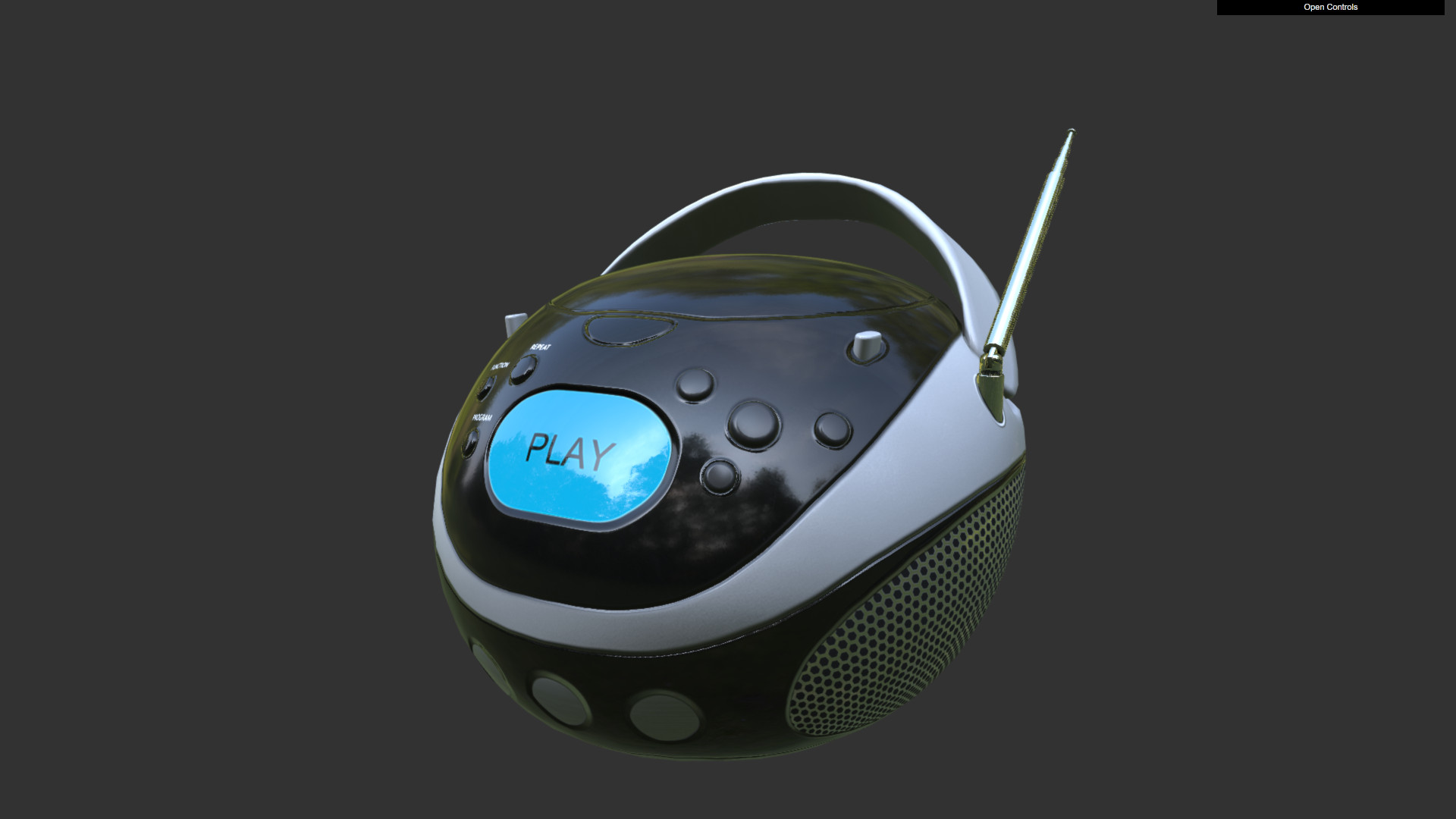This is the offical Khronos glTF 2.0 reference viewer using WebGL.
Table of Contents
If you would like to see this in action, view the live demo.
Controls
click + drag : Rotate model
scroll : Zoom camera
GUI : Use to change models and settings
Change glTF model
- Choose one of the glTF models in the selction list
or
- Drag and drop glTF files into viewer
Offline / Headless Rendering
NOTE: The dimensions of the rendered image are limited by the (virtual) desktop size.
Requirements
Configure environment
npm install(also installs Electron)npm run build(“compile” the code)
Run
npm run start-offscreen -- -- -hfor a list of available options
Example
npm run start-offscreen -- -- assets\models\2.0\FlightHelmet\glTF\FlightHelmet.gltf
After execution, the screenshot is stored as output.png on the file system.
For local usage and debugging, please follow these instructions:
(1) Checkout the reference-viewer branch
(2) Install dependencies with npm install
(3) Pull the submodules for the required glTF sample models and environments git submodule update --init --recursive
(4a) Start a demo in the browser with npm run dev, and open http://localhost:8000.
(4b) Start a demo in Electron with npm run dev:electron.
When making changes, the project is automatically rebuilt and the dist/ folder
is updated. Files in the dist/ folder should not be included in pull
requests — they will be updated by project maintainers with each new release.
- Requirements
- Install the Debugger for Firefox extension for Visual Studio Code
- Open the project folder in Visual Studio Code and select
Debug->Add Configuration->Firefoxso the.vscode/launch.jsonfile is created. Debug->Start Debuggingshould now launch a Firefox window with the reference viewer and VS Code breakpoints should be hit.
VS Code
Modified VSCode gltf-vscode plugin:
With the change from glTF 1.0 to glTF 2.0, one of the largest changes included core support for materials that could be used for physically-based shading. Part of this process involved chosing technically accurate, yet user-friendly, parameters for which developers and artists could use intuitively. This resulted in the introduction of the Metallic-Roughness Material to glTF. If you would like to read more about glTF, you can find the content at its GitHub page.
A good reference about Physically-Based Materials and its workflow can be found on the THE PBR GUIDE - PART 1 and THE PBR GUIDE - PART 2 from allegorithmic.
For implementation details and further theory, please find more information in the Real Shading in Unreal Engine 4 presentation from the SIGGRAPH 2013 course.
For further reference, please read the glTF 2.0: Appendix B: BRDF Implementation
The following sections do summarize the important shader code.
vec3 specularContribution = D * Vis * G;
vec3 diffuseContribution = (1.0 - F) * diffuse;
Please note: Vis = G / (4 * NdotL * NdotV)
Trowbridge-Reitz GGX
float microfacetDistribution(MaterialInfo materialInfo, AngularInfo angularInfo)
{
float alphaRoughnessSq = materialInfo.alphaRoughness * materialInfo.alphaRoughness;
float f = (angularInfo.NdotH * alphaRoughnessSq - angularInfo.NdotH) * angularInfo.NdotH + 1.0;
return alphaRoughnessSq / (M_PI * f * f);
}
Fresnel Schlick
vec3 specularReflection(MaterialInfo materialInfo, AngularInfo angularInfo)
{
return materialInfo.reflectance0 + (materialInfo.reflectance90 - materialInfo.reflectance0) * pow(clamp(1.0 - angularInfo.VdotH, 0.0, 1.0), 5.0);
}
Please note, that the above shader code includes the optimization for "turning off" the Fresnel edge brightening (see "Real-Time Rendering" Fourth Edition on page 325).
Smith Joint GGX
float visibilityOcclusion(MaterialInfo materialInfo, AngularInfo angularInfo)
{
float NdotL = angularInfo.NdotL;
float NdotV = angularInfo.NdotV;
float alphaRoughnessSq = materialInfo.alphaRoughness * materialInfo.alphaRoughness;
float GGXV = NdotL * sqrt(NdotV * NdotV * (1.0 - alphaRoughnessSq) + alphaRoughnessSq);
float GGXL = NdotV * sqrt(NdotL * NdotL * (1.0 - alphaRoughnessSq) + alphaRoughnessSq);
return 0.5 / (GGXV + GGXL);
}
Lambert
vec3 diffuse(MaterialInfo materialInfo)
{
return materialInfo.diffuseColor / M_PI;
}
- glTF 2.0
- KHR_lights_punctual extension
- KHR_materials_pbrSpecularGlossiness
- KHR_materials_unlit extension
- KHR_texture_transform extension
